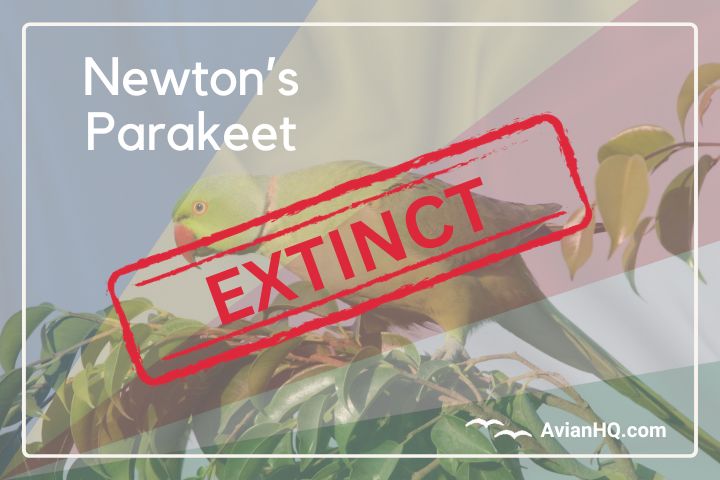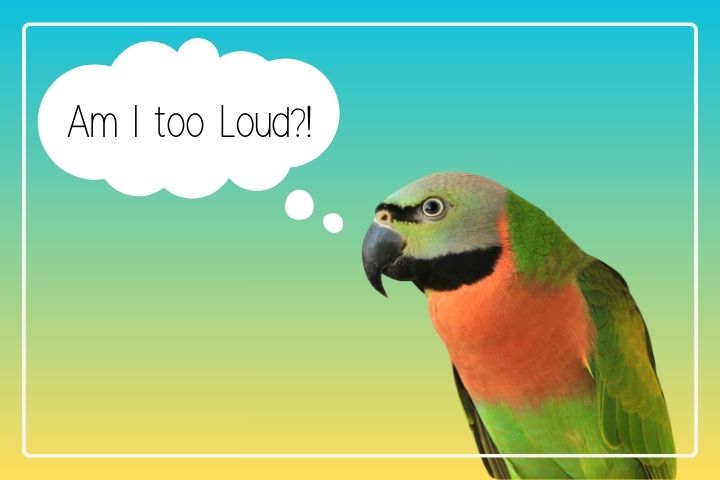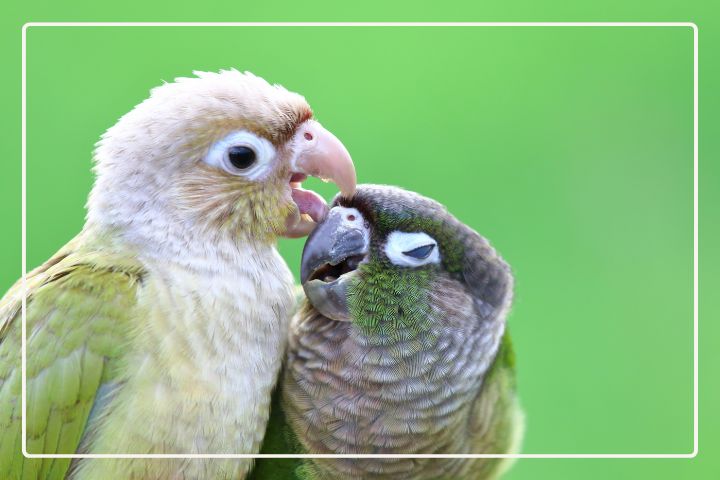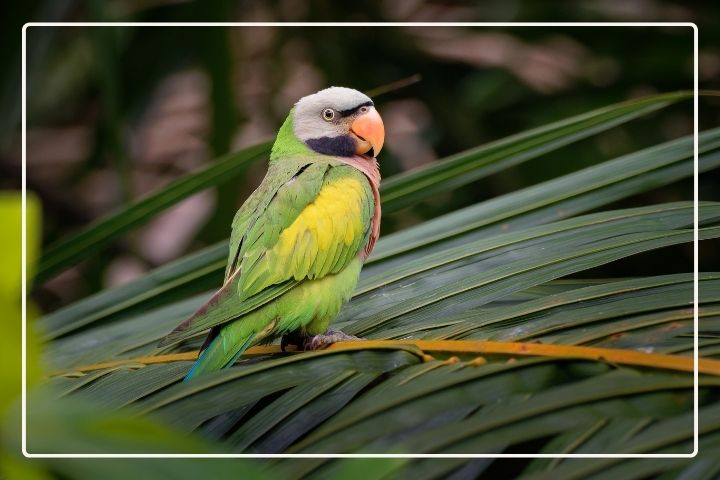The Extinct Newton’s Parakeet (Psittacula exsul)
As researchers of endangered species, we often lament the extinction of creatures that vanish before we can fully understand them. The Newton’s parakeet also known as the Rodrigues parakeet or Rodrigues ring-necked parakeet, a small vividly-colored bird native to the Seychelles islands, represents one such loss; it was driven to extinction in the early 20th century before adequate scientific documentation could occur. In this article, we will explore the brief natural history of this enigmatic parakeet – its origins, anatomy, habitat, diet, and disappearance – as well as the impact of its extinction on the Seychelles ecosystem and the lessons it offers for conservation. Though the Newton’s parakeet exists today only as samples in museum collections, it continues to serve as a reminder of our duty to protect endangered species before we lose them forever.
The story of the Newton’s parakeet illustrates the delicate balance of island habitats. Endemic to a few small islands, this little parakeet relied on fragile forests that were quickly destroyed by human activities. Within a few decades, the parakeet disappeared – a victim of extensive deforestation coupled with predation by invasive species. Its home isolated and its numbers few, the Newton’s parakeet serves as an example of the vulnerabilities island species face.
As researchers, it is frustrating to study creatures that were extinct before adequate data could be gathered. Accounts of living Newton’s parakeets offer tantalizing but ultimately incomplete glimpses into its behavior and ecology. Today, we must instead piece together the puzzle from specimens, drawings, diaries of naturalists who spotted them centuries ago. There is much about the Newton’s parakeet that will never be known for certain.
History of Newton’s Parakeet
The Newton’s parakeet story began in 1867 when the species was first scientifically documented by Alfred Newton, a British naturalist who pioneered ornithology in the Seychelles. Newton collected specimens while on a Seychellois expedition and sent them back to England, where the parakeet was given its eponymous Latin name Psittacula exsul Newton. So little was known about the islands’ avifauna at the time that Newton considered his find to be a possible new species.
In reality, the parakeet was likely endemic to certain Seychelles islands long before Newton’s arrival. Early French settlers who reached the islands in the mid-18th century made mention of small green parrots, which were likely Newton’s parakeets. For generations before Europeans set foot on the Seychelles, these birds undoubtedly nested in the dense indigenous forests and coconut groves, their bright plumage and exuberant squawks a distinctive feature of island life.
By the late 19th century, the parakeet appears frequently in the diaries and specimen collections of visiting naturalists, indicating a thriving population up until about 1885. Famed Harvard zoologist W.L. Abbott collected museum samples from Mahé, Silhouette, and Praslin in 1891 but ominously noted the parakeet’s scarcity compared to just a few years prior. This mirrored broader declines in Seychelles wildlife following human settlement. Within a few decades, the Newton’s parakeet had vanished completely. The last confirmed sighting came in 1906 from Curieuse Island. With its passing, a unique Seychelles voice fell silent.
Physical Appearance of Newton’s Parakeet
The Newton’s parakeet stood apart from other parrots of the Seychelles thanks to its distinctive size, colors, and proportions. Measuring approximately 16 inches (40 cm) from beak to tail tip, the parakeet was relatively diminutive for a parrot. Its main plumage consisted of bright grass green feathers across the head, back, chest, and underside. This verdant plumage provided excellent camouflage among the rainforest vegetation where it lived. There may have been a red patch on it’s wings, similar to the Alexandrine Parakeet, as they are related.
Males may have exhibited red patches on their wings similar to those found on the Alexandrine parakeet. Both genders had a black band stretching from the chin to the back of the neck, although it was more distinct in males.
One of the Newton’s parakeet’s most striking features was its vivid red beak, which contrasted handsomely with the green feathers. The tail feathers were long and tapered, spanning roughly 8 inches (20 cm) on an adult bird. When perched, the tail constituted about half the parakeet’s total length. Like many parrots, the Newton’s parakeet had specialized tail feathers that enabled climbing and stability.
The parakeet’s wings were broad and pointed, optimal for its swift, agile flight pattern. Its wingspan reached approximately 8 inches (20 cm) fully outstretched. Weighing roughly 2.5 ounces (70 grams), the Newton’s parakeet had a slim, lightweight build well suited to an arboreal existence flitting through branches. While not large, the parakeet’s bright plumage and vocal behavior provided an outsized presence in its tropical ecosystem.
Habitat and Distribution of Newton’s Parakeet
The Newton’s parakeet evolved as an endemic resident of the Seychelles, a picturesque archipelago in the Indian Ocean northeast of Madagascar. Scientists believe the parakeet once inhabited a handful of islands within the group, including Praslin, Mahé, Silhouette, and Curieuse. This range coincided with the location of the Seychelles’ indigenous forests.
Like many island species, the Newton’s parakeet was intricately adapted to a specific habitat – in this case, coastal broadleaf forests. The parakeets favored mature forests with large, spreading tamanu and badamier trees which provided food sources as well as nesting cavities. They were arboreal, spending most of their time foraging and nesting high in the forest canopy.
The parakeets were also frequently observed in palm groves and mixed woodlands nearby their core forest habitat. But clearance of forests for cinnamon plantations and other development deprived the birds of nesting sites and sources of food. Deforestation also fragmented populations, which reduced genetic diversity. Habitat loss was thus a major factor in the species’ demise.
Sadly, the parakeet’s limited island distribution left it vulnerable to extinction. When its habitat was degraded and its numbers declined, there were no neighboring populations to buoy it. Isolated island species often suffer this fate. Protecting biodiversity requires preserving not just species but their habitats – something the fate of the Newton’s parakeet underscores.
Diet of Newton’s Parakeet
The Newton’s parakeet was specialized to take advantage of the diverse fruiting trees and flowering plants in its tropical ecosystem. Analysis of museum specimens as well as field observations by 19th century naturalists suggest the species was predominantly frugivorous (ate fruits and berries) and nectarivorous (drank flower nectar):
Fruits and Berries
- Figs
- Tamarind
- Mangos
- Palm seeds
- Palm fruits
Flowers
- Hibiscus
- Kapok tree flowers
- Casuarina flowers
Other Plant Material
- Leaves
- Buds
- Shoots
Like many parrots, the parakeet’s strong curved beak was ideal for clipping and opening tough fruits. Their nectar-loving habits contributed to pollination. As one observer in 1895 wrote:
“They dart from tree to tree, bright as winged emeralds, pausing to devour each ripened fruit or extract nectar from the flowers through their specialized beaks. They act as mobile agents of seed dispersal and pollination – truly partners in the island’s floral systems.”
Unfortunately, habitat loss meant the disappearance of the parakeet’s specialized food sources. Coupled with fewer nesting sites, declining resources expedited the species’ demise. Even on islands, organisms are interlinked – and the loss of just one thread can unravel the whole tapestry.
Extinction Theories of Newton’s Parakeet
The extinction of the Newton’s parakeet was likely caused by an intersection of multiple threats that ultimately led to the species’ premature disappearance. Here are some of the major theories behind the factors that drove the parakeet to extinction:
Deforestation
- Widespread clearing of native forests by early human settlers removed vital nesting cavities in tree hollows that the parakeets depended on for breeding.
- Logging also eliminated food sources like figs, palms, and other fruiting trees that provided sustenance for the parakeets.
- Deforestation fragmented and isolated the already limited range of the species across a handful of islands. This prevented birds from dispersing to new areas and reduced genetic diversity.
Invasive Species
- Rats likely predated on eggs and nestlings in tree hollow nest sites. Persistent attacks on multiple nests over time depleted reproductive success.
- Roaming domestic cats brought by settlers were adept at climbing trees and preyed readily on adult parakeets. Predation thinned population numbers.
- Introduced mynah birds competed aggressively for scarce nesting cavities, displacing parakeets from their natural breeding sites.
Overhunting
- Newton’s parakeets were colorful, conspicuous birds that were likely captured extensively for food and trade. Overhunting reduced population sizes.
- As forests were cleared, parakeets became easier to spot and capture using snares, guns, or sticky trapping substances. This amplified hunting pressures.
Disease
- Isolated island birds had no immunity to avian diseases introduced along with caged pet birds and poultry. Virulent diseases like avian malaria likely infected and depleted the surviving population.
- The parakeet’s increasingly small population size made the effects of contagious diseases more devastating and recovery less likely.
Natural Disasters
- Cyclones and storms periodically striking the Seychelles may have damaged forests and exacerbated food shortages. This could have disproportionately impacted the few remaining parakeets.
- Prolonged drought periods that periodically afflicted the islands also reduced available food resources, starving remaining populations.
The unfortunate reality is that the Newton’s parakeet faced a barrage of mutually reinforcing threats – from habitat degradation to aggressive predators – that intersected to drive this vulnerable species swiftly to extinction. Conservation of endangered island endemics requires mitigating this dangerous combination of risks.
Conservation Efforts of Newton’s Parakeet
Attempts to Locate Surviving Birds Failed
Unfortunately, dedicated searches to locate any surviving Newton’s Parakeets in the wild came too late. The parakeet was granted legal protection from hunting in 1901, but the population was likely already decimated by that point. Between 1903 and 1906, British colonial authorities in the Seychelles ordered extensive surveys across islands where the parakeet had last been reported. Teams scoured forests, coasts, and gardens calling for the birds and offering rewards for verified sightings. But no living specimens could be found. The last confirmed observation was a single parakeet spotted on Conception Island in 1906. After that point, the species was never seen again in the wild despite intensive efforts.
New Protection Measures Enacted
Though they could not save the Newton’s Parakeet, conservationists in the Seychelles enacted new protective measures in the early 20th century that benefited other endemic island species:
- The Seychelles created its first nature reserves in the early 1900s designed to protect habitats. Silhouette Island was designated a reserve in 1909 specifically to safeguard threatened birds. Moratoriums slowed the rapid deforestation that had occurred across islands.
- Collection and export of the Seychelles’ rare fauna was strictly regulated after 1905. Trapping pressure declined as a result.
- Eradication and control efforts began against invasive mammal species like rats, cats, and mynah birds which threatened ground-nesting species. More robust invasive species management was implemented.
Initiation of Captive Breeding Efforts
No Newton’s Parakeets had been brought into captivity prior to the species’ extinction. However, the plight of the parakeet focused attention on establishing captive breeding populations of other endangered Seychelles birds as a conservation strategy:
- In the late 1890s, the island’s threatened palm spiders and scops owls were transported to London and Antwerp zoos to create managed captive populations.
- After the Newton’s Parakeet vanished, conservationists recommended extending similar efforts to other endangered endemics. Several breeding programs began in the 1920s and 30s for birds like the Seychelles blue pigeon.
While tragically too late to resurrect the Newton’s Parakeet, these pioneering captive breeding attempts offered hope for saving other uniquely Seychelles birds from extinction. The parakeet’s story was a catalyst for such preventative action.
As one early environmentalist wrote:
“Let the sad loss of this crimson-beaked parakeet instill in us the commitment to defend those unique avians that still fly above these islands, lest they follow the Newton’s parakeet into oblivion.”
The Plight of Other Extinct Psittacula Parakeets
The Newton’s Parakeet was not the only member of the Psittacula genus driven to extinction through human activities. Two other island parakeets, the Mascarene Grey Parakeet and Seychelles Parakeet, suffered similar fates due to deforestation and invasive species.
The Mascarene Grey Parakeet was native to two islands in the Mascarene archipelago in the Indian Ocean: Mauritius and Réunion. About 12 inches long with predominantly grey plumage, this species lived in forests and palm groves, feeding on fruits, flowers and buds. Persecution by settlers and habitat destruction led to its extinction in the mid-1800s. The last population on Réunion survived until 1870 before vanishing completely.
The Seychelles Parakeet emerged as a distinct species in the Seychelles around 1.5 million years ago. Adapted to upland forests, it fed on seeds and fruit. The introduced black rat attacked nests and preyed on chicks. This parakeet was last seen in 1906 and declared extinct in the 1930s. Only three museum specimens exist today.
Like the Newton’s Parakeet, these vulnerable island parakeets were driven to oblivion by human encroachment. Their extinctions represent preventable losses of unique biodiversity. Only with vigilance and habitat conservation can we protect other endangered parrots from following suit.
Significance and Legacy of Newton’s Parakeet
Enduring Scientific Importance
Although extinct for over a century, the Newton’s Parakeet continues to hold scientific significance for researchers today:
- Well-preserved museum specimens allow examination of the species’ anatomy and coloration. Analysis of eggshell fragments provides data on size, shape, and thickness.
- Its extinction underscores the devastating impact of introduced predators and habitat loss on vulnerability of island endemics with small population sizes.
- The parakeet represents a missing branch in the evolutionary tree of Seychelles biodiversity that can never be recovered.
Symbol of Extinction and Rallying Point for Conservation
The Newton’s Parakeet remains an iconic lost bird of the Seychelles, acting as a high-profile symbol of extinction:
- It appears on the Seychelles’ currency and postage stamps as a reminder of the fragility of island ecosystems.
- Its story galvanized the islands’ early conservation groups in the late 1800s to lobby for habitat protection.
- This distinctive parakeet is featured prominently in exhibits at the national museum, painted in vivid colors with its crimson beak.
Lessons for Modern Conservation
The preventable extinction of the Newton’s Parakeet also imparts cautionary lessons that guide conservation today:
- It highlights the existential hazard invasive species can pose to island endemics. Biosecurity is now prioritized to prevent introductions.
- Habitat preservation of indigenous forests is recognized as paramount for protecting endemic biodiversity, not just single species.
- Extinctions can occur rapidly – underscoring the need for proactive conservation before populations crash.
Though collections are all that remain, the Newton’s parakeet continues to spread its wings through the persistence of memory. It reminds us that our stewardship of the natural world will determine whether other unique creatures go extinct or thrive. As conservationists, we still have much to learn from this diminutive island parakeet.
Conclusion
The extinction of the Newton’s parakeet in the early 20th century remains lamentable, but by understanding this bird’s demise we can better protect species today. Endemic to a few small Seychelles islands, the brilliantly plumed parakeet saw its limited forests destroyed and its population fragmented. The introduced predators and diseases that colonists brought sealed the bird’s fate.
Efforts to locate remnant parakeet groups came too late, though the species’ disappearance did catalyze habitat protection and invasive species control that benefited other Seychelles wildlife. Museums specimens and fragments of naturalists’ accounts provide faint echoes of this parakeet’s lost songs. Yet even in death, the parakeet reminds us of our own potential for destruction – and the chance we still have for redemption through good stewardship.
The Newton’s parakeet illustrates that even small, vibrant species can easily vanish when ecosystems fall out of balance. On islands, endemic birds like this one have little margin for error. Protecting future biodiversity requires that we conserve habitat, control invasives, and maintain interconnected populations. The story of this extinct parakeet compels us to act more wisely going forward.
By heeding the lessons of species like the Newton’s parakeet, we can get ahead of threats through improved environmental policies and sustainable practices. With vigilance and compassion, we may prevent other extinctions. Perhaps someday vibrant Seychelles forests will again ring with the squawks of parakeets – if not Newton’s, then another species given refuge. There is still hope and much work ahead.








F*ckin’ remarkable issues here. I’m very glad to peer your post. Thank you so much and i am looking ahead to contact you. Will you please drop me a mail?